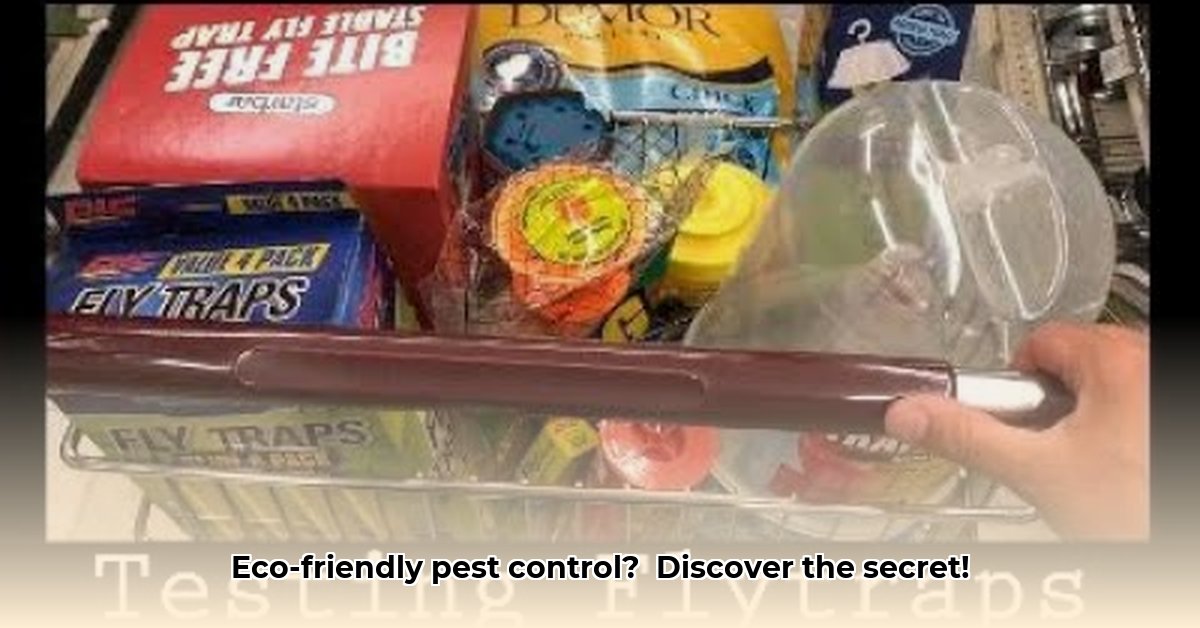
Sustainable farming practices are no longer a niche trend; they are a critical component of ensuring food security and environmental health. Traditional reliance on chemical pesticides presents significant drawbacks, including environmental contamination, harm to beneficial insects, and potential health risks. Integrated Pest Management (IPM) offers a powerful alternative, minimizing chemical use while maximizing crop protection. This guide explores IPM strategies and how resources like those available at Fly Killer Tractor Supply (or similar retailers) can support sustainable pest control. For more pest control options, check out helpful resources.
Understanding Integrated Pest Management (IPM)
IPM is a holistic approach that prioritizes prevention and minimizes reliance on chemical pesticides. It involves a multi-pronged strategy, integrating various techniques to manage pest populations below economically damaging levels. This balanced ecosystem approach considers the interconnectedness of various species and environmental factors.
Key IPM Principles:
- Monitoring: Regularly surveying crops for pest presence and identifying their lifecycle stages (e.g., eggs, larvae, adults) is paramount for early detection and targeted intervention.
- Prevention: Proactive measures such as crop rotation, resistant varieties, and optimizing growing conditions deter pests before infestations occur.
- Biological Control: Introducing natural predators (beneficial insects, nematodes) or microbial pesticides (bacteria, fungi) to control pest populations. Fly Killer Tractor Supply (or similar stores) may offer some of these biocontrol agents.
- Targeted Pesticide Use: Chemical pesticides are used judiciously only when other methods fail and pest numbers threaten crop viability. This requires precise application techniques, targeting only affected areas, to minimize environmental impact.
Biocontrol Methods: Nature's Pest Control Agents
Biological control utilizes natural enemies of pests to reduce their populations. This environmentally friendly approach offers several advantages over synthetic pesticides.
Examples of Effective Biocontrol Agents:
- Beneficial Insects: Ladybugs, lacewings, and praying mantises are voracious predators of common agricultural pests. Introducing these insects into your farm ecosystem can significantly reduce pest numbers organically.
- Microbial Pesticides: These utilize naturally-occurring microorganisms (e.g., Bacillus thuringiensis) to target specific pests. They are usually less harmful to beneficial insects and less likely to contaminate the wider ecosystem.
- Nematodes: Microscopic worms that target soil-dwelling pests, offering a natural method of controlling these frequently overlooked threats. Several types of nematodes are commercially available for agricultural applications.
Cultural and Physical Controls: Minimizing Pest Pressure
Non-chemical methods can significantly reduce pest pressure and minimize your need for chemical intervention. These cost-effective strategies are environmentally friendly and contribute to long-term sustainability.
Effective Cultural and Physical Controls:
- Crop Rotation: Alternating crops annually disrupts pest life cycles, reducing their ability to build significant populations.
- Intercropping: Planting different crops in close proximity creates a less hospitable environment for pests, offering a natural form of pest deterrence.
- Physical Barriers: Row covers, netting, and traps prevent pest access to crops. This physical exclusion can be highly effective for some pests.
Targeted Pesticide Use: A Last Resort Strategy
Chemical pesticides, while sometimes necessary, should be a last resort within an IPM framework. Their use requires careful planning and precise application to minimize environmental impact and ensure safety.
Best Practices for Pesticide Use:
- Accurate Pest Identification: Precisely identifying the pest is crucial for selecting the appropriate pesticide and minimizing non-target effects.
- Targeted Application: Spraying only the affected areas reduces pesticide overuse and environmental contamination.
- Adherence to Label Instructions: Strictly following label instructions, including safety precautions and application rates, is non-negotiable.
Economic Considerations: The Long-Term Value of IPM
While the initial investment in IPM might seem higher compared to solely relying on chemical pesticides, the long-term benefits often outweigh the costs. Reduced pesticide expenses, increased yields due to healthier crops, and the potential for premium pricing for sustainably grown produce contribute to substantial financial savings. Government programs and incentives frequently support farmers transitioning to sustainable practices.
Step-by-Step Guide to Implementing IPM on Your Farm
Implementing IPM requires a structured approach. The following steps provide a practical roadmap for effective pest management:
- Farm Assessment: Identify your farm's specific pest issues and vulnerabilities.
- Monitoring Plan: Establish a routine monitoring schedule to detect pests early.
- Preventative Measures: Implement preventative strategies such as crop rotation, resistant varieties, and optimal growing conditions.
- Biocontrol Strategies: Introduce beneficial insects or nematodes as appropriate.
- Targeted Pesticide Use (if Necessary): Use only when other methods fail, adhering strictly to label instructions.
- Evaluation and Adjustment: Continuously monitor the effectiveness of your IPM strategy and adjust your approach based on observed outcomes.
Successfully implementing IPM requires patience, observation, and a willingness to adapt your strategies based on specific outcomes. Resources available at Fly Killer Tractor Supply and similar retailers can provide valuable support.